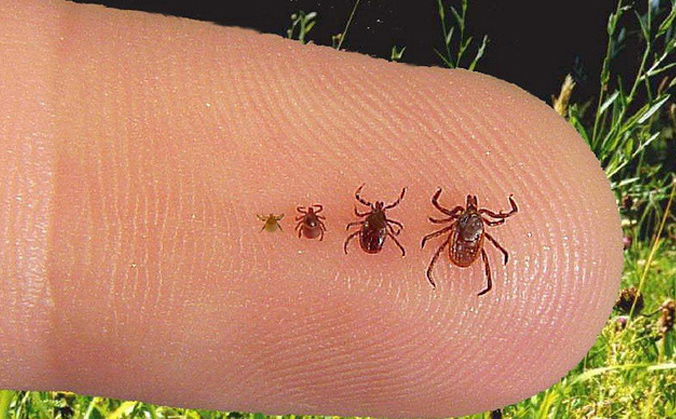Hendren’s Helpful Hints – Ticked Off!
Hello everyone, and thanks for reading today’s post!
Today I would like to discuss Lyme disease and your pet. Now, I know what you’re thinking: “Dr. H, we are in North Carolina, not New England! We don’t have to worry about Lyme disease here!” Well my friends, I am here to bring you the unfortunate news that Lyme disease is not only here, but we are seeing more and more cases every year. You can see some prevalence maps on the Companion Animal Parasite Council’s website, capcvet.org. These maps have data for the US, North Carolina, and specific counties in North Carolina. It’s interesting to note that in 2011 in North Carolina, Lyme disease was found in 1 out of 62 dogs. In 2016 the prevalence increased to 1 out of 45 dogs. So what IS Lyme disease?
Here is some fun history about Lyme disease. Well, fun relative to the actual disease itself. It is named after a town in Lyme, Connecticut where, in 1975, unusually large numbers of children were developing rheumatoid arthritis and strange rashes after experiencing tick bites. It wasn’t until 1982 that Dr. Willy Burgdorfer found the etiologic agent (the bacteria causing all the fuss). It was named Borrelia burgdorferi in his honor. Borrelia burgdorferi is a spirochete bacterium. Spirochetes are corkscrew-shaped and look pretty cute as far as bacteria go – until you know how they act. Other spirochete bacteria include Leptospira species which cause Leptospirosis (more on this disease in a post to come), and Treponema species which cause syphilis. See what I mean? Not so cute now, are they?
Lyme disease is spread by ticks, more specifically Ixodes species. The deer tick is more common on the East Coast, the black-legged tick on the West Coast. Don’t let the name fool you – these deer ticks will feed on ALL kinds of animals, including you! Once the tick ingests the bacteria from an infected host (mice, small birds, and other small animals), the bacteria travel to the gut of the tick where they wait for their opportunity to infect a new host. Once a tick bites another host and starts feeding, the clever little Borrelia bacteria migrate to the tick’s salivary glands, where they are then injected into the new host. It takes about 48 hours once a tick attaches to a host for this migration to occur, so if we kill the tick before 48 hours of attachment there is little chance of infection in the new host. Remember this! It becomes important later when we talk about tick preventives.
Lyme disease can cause a multitude of symptoms in your pet, including: fever, swollen lymph nodes, joint swelling, shifting leg lameness, and the characteristic red, bull’s-eye rash. The disease can present in many different ways due to migration of the bacteria through the skin, muscles, connective tissues, and joint tissues. Clinical signs are seen based on the body’s inflammatory response to the area where the bacteria are found. Lyme disease can also less frequently cause a serious form of kidney disease. Lyme nephropathy causes acute progressive failure of the kidneys which, in the majority of cases, leads to death or euthanasia due to loss of quality of life. Pets can also suffer from Lyme-associated cardiomyopathy, rheumatoid arthritis, meningitis, or encephalitis; fortunately, these cases are rare.
We diagnose Lyme disease using a combination of tests, which can include but are not limited to: complete blood count, chemistry profile, urinalysis, C6 protein antibody testing, and ELISA (enzyme-linked immunosorbent assay) SNAP test. We can also biopsy affected tissues and send them for PCR (polymerase chain reaction) testing to locate DNA of the bacterium. As you can imagine, Lyme disease can make your pet feel very sick, and diagnosing the disease can be expensive. Hopefully the idea of prevention is starting to sound really good to you right about now. If so, read on!
So now you know a little about the bacteria, let’s talk turkey…about ticks. I think there are a couple of surprising things about ticks that most people don’t know. One is that they are actually arachnids! Just like spiders, scorpions, and mites they have eight legs. The other surprising fact is that a tick’s life cycle lasts TWO years. Those little guys live a pretty long time! So now you can really impress everyone you meet at a cocktail party. If it’s a cocktail party full of geeks like me. So let’s walk through how the tick grows up and feeds so you have a better idea of how Lyme disease is spread.
In the spring, a female tick can lay around 2,000 eggs. During the late summer/early fall, these eggs hatch into a larval stage with only six legs. The larvae feed on small animals, in particular the white-footed mouse, and then they go into a resting stage over the winter. These small animals are how the larvae pick up the Lyme bacteria. Then, in the spring, the larvae molt into a nymph stage with all eight legs. These nymphs are TINY. They are so tiny that most people do not notice THEY are bitten, much less a dog or cat with a thick coat of fur. In addition, after feeding on infected small animals, about 25% of them are ready to pass the Lyme bacteria on to a new host. The nymphs feed for about 4 days throughout the summer, and then molt into adults in the fall. Along the way from the nymph feeding to the adult molt, 80% of ticks become infected with Lyme disease. These adult ticks are the most important source of infection for dogs. All throughout the fall, the male and female adults will feed on a host. They mate on the host as well. The males stay on the host and die after mating, while the females will engorge on blood for 5 to 7 days before falling off the host. These females then live under leaves and other detritus for the winter. In the spring, they emerge and lay their eggs and the whole cycle begins again.

So how do we fight these little eight-legged Lyme taxis? For dogs, we offer Bravecto, Nexgard, and Frontline Plus for tick and flea prevention. Bravecto and Nexgard have almost 100% tick kill rate by 12 hours, and Frontline Plus has 100% tick kill rate by 18 hours. You’ll notice that all of these times are significantly less than the critical 48-hour attachment window needed for Lyme disease infection. Frontline Plus is a topical treatment (you apply it on top of the skin) that you apply every 30 days. Nexgard and Bravecto are both oral chewables (you give them by mouth); Nexgard is given once every 30 days and Bravecto is given once every 12 weeks. I would recommend any of these products for ticks, but I like the oral chews better because they can’t be washed off if a dog goes swimming or if it gets frequent baths. For cats, we offer Frontline Plus. This is a topical product that can be used in conjunction with Revolution for Cats. The Frontline Plus tick speed of kill rate is similar in dogs and cats.
Please stop by the clinic anytime to start a prevention routine for your pet! If you have any questions or would like to do further reading, I have provided some client education links below. Feel free to comment any topics you’d like to see discussed in the future!
Here’s to Happy, Healthy Pets!
Dr. Lauren Hendren
Client Education Resources:
Veterinary Partner - http://www.veterinarypartner.com/Content.plx?P=A&S=0&C=0&A=2311
Centers for Disease Control and Prevention - http://www.cdc.gov/lyme/
Sources:
Veterinary Information Network, Lyme Disease Associate Article, Linda G. Shell, DVM, DACVIM 6/16/2004, revised by Kari Rothrock, DVM 2/1/2012, http://www.vin.com/Members/Associate/Associate.plx?from=GetDzInfo&DiseaseId=1169.
Current Veterinary Therapy XII Small Animal Practice, Canine Lyme Disease by Max J. G. Appel and R. H. Jacobson, 1995.
